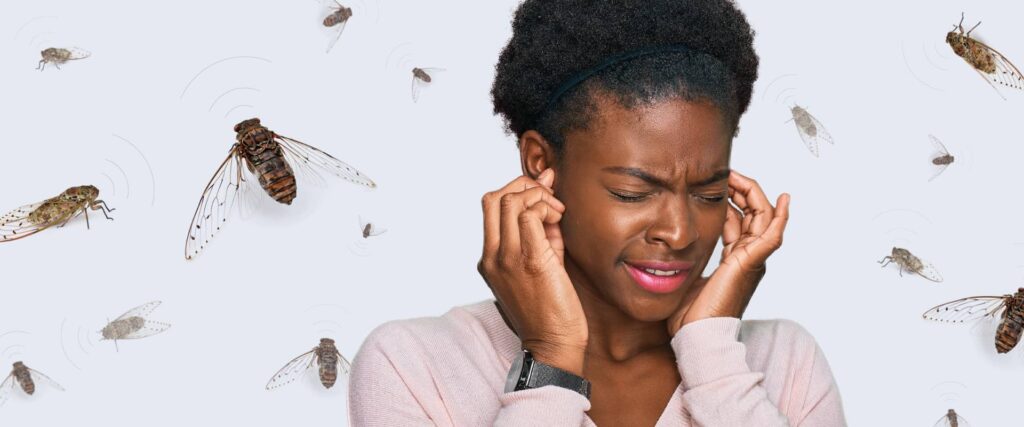By Robert M. DiSogra
This article is a part of the July/August 2019, Volume 31, Number 4, Audiology Today issue.
Plant oils have been used medicinally for over 2,500 years. The first references to the use of plant oils can be traced to Chinese medicine, also known as Traditional Chinese Medicine.
Various parts of plants were consumed in either the raw state or dried, boiled, or steamed (to extract the oil). The end product was then consumed, inserted into any one of the natural openings of the body, massaged into the skin, or inhaled in vapor form.
During the Medieval period, a collection of medicinal treatments for a variety of ailments was published by Abu Ali al-Husain Ebn Abdullah Ebn Sina (980–1037 AD). He was known in the West as Avicenna, a Persian physician who was also known as one of the most influential medical writers in the medieval period.
Avicenna`s Canon of Medicine, arguably one of the most famous books in the history of medicine, presents a clear and organized summary of all of the medical knowledge of the time, including a long list of drugs. Interestingly, lily and spotted orchid oils are mentioned as remedies for tinnitus (Mahdizadeh et al, 2015).
Throughout the 18th and 19th centuries, advances in western medicine progressed. The American Medical Association was founded in 1847 and the American Pharmaceutical Association was founded in 1852. At the federal level, the Food, Drug, and Insecticide Administration (FDIA) was created 1927 and, three years later, changed its name to the Food and Drug Administration (FDA).
Definition of Essential Oil
While there is no federal regulatory definition for essential oils (EOs), aromatherapy practitioners and proponents commonly use the term to refer to certain oils extracted from plants. The U.S. FDA treats ingredients from plants the same as those from any other source.
For example, EOs are commonly used in so-called aromatherapy products. If an aromatherapy product is intended to treat or prevent disease, or to affect the structure or function of the body, it is, by definition, a drug. Similarly, a massage oil intended to lubricate the skin is a cosmetic. But if claims are made that a massage oil relieves aches or relaxes muscles, apart from the action of the massage itself, it’s a drug, or possibly both a cosmetic and a drug (see The Role of the FDA, 2019a).
If a product is intended for a therapeutic use, such as treating or preventing disease, or to affect the structure or function of the body, it is a drug (i.e., relieves tinnitus, eases pain, relaxes muscles, treats depression or anxiety, or helps you sleep).
Such claims are sometimes made for products such as soaps, lotions, and massage oils containing EOs and marketed as aromatherapy. The fact that a fragrance material or other ingredient comes from a plant doesn’t keep it from being regulated as a drug.
To find out if a product marketed with drug claims is FDA-approved, contact the FDA Center for Drug Evaluation and Research (CDER), at druginfo@fda.hhs.gov.
Major Components of EOs
The major chemical components of EOs include terpenes, esters, aldehydes, ketones, alcohols, phenols, and oxides. A given EO contains varying amounts of each of these compounds, which impart a particular fragrance and determine its therapeutic characteristics (Bakkali et al, 2008).
How Safe Are EOs?
Federal law does not require FDA approval of EOs or cosmetics before they go on the market, but they must be safe for consumers when they are used according to labeled directions, or as people customarily use them.
Companies and individuals that manufacture or market cosmetics have a legal responsibility for ensuring that their products are safe and properly labeled but, again, they are not required to do so by federal law (U.S. FDA, 2019b).
Some consumers may be concerned that EOs are unsafe. Many plants contain materials that are toxic, irritating, or likely to cause allergic reactions when applied to the skin.
For example, cumin oil is safe in food, but can cause the skin to blister. Certain citrus oils used safely in food can be harmful in cosmetics, particularly when applied to skin exposed to the sun. A thorough review of cutaneous implications of EOs can be found in Vangipuram et al (2017).
Volatility
EOs are also volatile: “a rapidly evaporating oil of plant derivation.” Sometimes volatile oils are referred to as aromatic oils (Activation Products, 2019).
The Role of the FDA
Companies that advertise EO products specifically for the treatment of hearing loss, tinnitus relief, or vertigo are, technically, in violation of federal law because the claim fits the definition of a drug. However, if there is a disclaimer on the package (“These statements have not been evaluated by the FDA. This product is not intended to treat, cure or prevent any disease.”), there is no violation. This is the loophole that allows EO, dietary supplements, and nutraceutical manufacturers to make claims of “cures” without evidence-based research.
Any oil product intended to treat or prevent disease or to affect the structure or function of the body is, by definition, a drug. If the oil is intended to lubricate the skin, it is a cosmetic.
Who Regulates Advertising Claims?
While the FDA regulates labeling for cosmetics and drugs, advertising claims are regulated by the Federal Trade Commission (www.ftc.gov).
The practice of using plant oils and other herbal products in lieu of a pharmaceutical for medical intervention continues to this day. Currently, the FDA classifies herbal products (including plant oils) as food. Consequently, there are no requirements to support any claims or statements made by manufacturers concerning efficacy and/or safety.
In reviewing EO websites for this article, testimonials were found throughout these websites. According to Commander Jason Humbert, MHS, RN, a regulatory operations officer in the FDA Office of Regulatory Affairs, “consumers should be suspicious of products that claim to treat a wide range of diseases and that personal testimonials are no substitute for scientific evidence” (U.S. FDA, 2019b).
EOs for Hearing Loss, Tinnitus Relief, or Vertigo
Searching the Internet for “essential oils for hearing loss (tinnitus or vertigo)” resulted in several websites that listed anywhere from five to 10 oils for tinnitus relief (either in isolation or in combination with other oils).
None of the sites were able to back up their claims with published scientific data or list references of published research in peer-reviewed journals.
Despite the fact that EOs for hearing loss, tinnitus relief, or vertigo are drugs, none of these websites had a medical advisory board, except forone (www.organicfacts.net).
So how is it that these claims of hearing loss, tinnitus relief, or vertigo can be made without evidence-based research? Again, the FDA classifies herbal products (including plant oils) as food. Consequently, there are no requirements to support any claims or statements made by manufacturers concerning efficacy and/or safety. This loop hole in federal regulations allows EO products currently on the market to be advertised and/or recommended for ailments including hearing loss, tinnitus relief (or cure), or vertigo.
How do EOs help hearing loss, tinnitus, or vertigo? Short answer: They don’t.
Long Answer: EOs are marketed as being useful in treating a variety of ailments because of their numerous therapeutic properties.
It is not unusual to see claims such as the following:
- Improves circulation of both air and blood throughout the body.
- Provides relief from pain, as earaches usually happen when there is an unbalance of air in the ears.
- Decreases congestion in the respiratory airways, especially the eustachian tube, which is connected to the middle ear.
- Relieves ear pain and discomfort because of their analgesic properties.
- Reduces the stress and depression that affects people with tinnitus.
- Soothes inflammation that causes tinnitus due to ear infections.
- Helps to increase focus and concentration that is disrupted by tinnitus (The Miracle of Essential Oils, 2019).
How EOs Are Used
The following paragraphs outline common recommendations suggested by websites for use of EOs. Websites offering EOs advise to dilute the oils first before use by mixing them into a “carrier oil” (i.e., vegetable oils full of fatty acids, jojoba, coconut, sesame oils). Fewer risks are associated with inhalation or diffusion methods. EOs should not be ingested.
EOs should never be placed into the ear canal, as the oil can burn the sensitive mucous membranes found within the ear if it is used undiluted. Most websites advise not to place the oil directly into the ear canal.
Massage is the best way to apply EOs to help relieve symptoms. The best places to apply them include behind the ear, all over the neck, on the ear lobe, or on the outer ear canal. They also can be inhaled using a diffuser (depending on the oil and the manufacturer’s recommendation).
Garikiparithi (2017) notes that, for tinnitus patients, using EOs two or three times a day is ideal for treating tinnitus symptoms. It is important to keep in mind that results will vary depending on the cause of your tinnitus and other factors.
Side Effects of EOs
EOs have become popular for their positive effects. However, they can have side effects that can be harmful. These may include rashes on the skin, allergic or burning reactions, and/or headaches (due to the strong aroma).
Do EOs Expire?
EOs in their form do not expire, but they have a shelf life. Oxygen, light, and heat do affect them and their quality.
Precautions with EOs
The website Home Remedies for All (2019) advises the following:
- Do not use any EO directly on your skin or ear.
- Always use EOs with a carrier oil for better effect.
- Each case of tinnitus has a different underlying cause, so different EOs will produce different results.
- Experiment with different EOs to arrive at the most suited in your case.
- Make sure that your eardrum is not affected by any oil, be it EO or the carrier oil.
- Exercises, yoga, and meditation also work well, as they improve blood circulation.
The most encouraging statement found among all the EO websites for tinnitus was “Most people begin to ignore tinnitus, and surprisingly, that itself gives them enough relief. Do not focus on the ringing of the ears, but stay focused on everything possible that can stop it” (Home Remedies for All, 2019).
Disclaimers
Interestingly, few websites had disclaimers/precautions. The following is an example of an EO disclaimer:
The information on TheMiracleofEssentialOils.com is not intended or implied to be a substitute for professional medical advice, diagnosis or treatment. All content, including text, graphics, images and information, contained on or available through this web site is for general information purposes only. For any health queries, please consult your doctor or qualified health care provider. TheMiracleofEssentialOils.com is not responsible nor liable for any advice, course of treatment, diagnosis or any other information, services or products that you obtain through this site. (www.themiracleofessentialoils.com/essential-oils-for-vertigo)
Conclusion
EOs have not been proven to be effective for hearing loss, tinnitus relief, or vertigo, despite the claims made on numerous websites. While user testimonials abound, personal statements are not a substitute for proper medical care to establish a cause for these problems.
A review of articles pertaining to the use of EOs for hearing loss, tinnitus, and vertigo in the National Library of Medicine revealed no supportive research, despite some implications.
Commercial websites offering EO products for hearing loss, tinnitus relief, or vertigo offer very little, if any, evidence-based research to back up the claims being made about their products’ effectiveness for relieving these problems.
Hearing loss, tinnitus, and vertigo are symptoms that should be explored medically and audiologically. Ear, nose, and throat (ENT) physicians and audiologists should counsel their patients about the use of these products for management. Yes, the placebo effect must be considered when someone reports relief. Some EOs are not recommended for cardiac patients, diabetics, pregnant or nursing women, or children (per the manufacturer’s recommendation, in some cases).
Testimonials and non-scientifically proven statements may be very convincing; however, there is very little evidence-based research that EOs are effective for improving hearing, for tinnitus relief, or for vertigo.
Audiologists should not recommend EOs for hearing loss, tinnitus relief, or vertigo, despite claims made by purveyors of these products and user testimonials.

References
Activation Products. (2019) www.activationproducts.com/blog/what-are-volatile-oils.
Bakkali F, Averbeck S, Averbeck D, Idaomar M. (2008) Biological effects of essential oils - a review. Food Chem Toxicol 46:446–475.
Garikiparithi M. (2017) 7 essential oils for tinnitus: benefits and how they can treat ringing ears. Hear Health June.
Home Remedies for All. (2019) www.homeremediesforall.com.
Mahdizadeh S, Khaleghi Ghadiri M, Ali Gorji A. (2015) Avicenna’s canon of medicine: a review of analgesics and anti-inflammatory substances. Avicenna J Phytomed 5(3):182–202.
The Miracle of Essential Oils. www.themiracleofessentialoils.com/essential-oils-for-tinnitus.
U.S. Food and Drug Administration (2019a). www.fda.gov/Cosmetics/ProductsIngredients/Ingredients/ucm388821.htm#essential
U.S. Food and Drug Administration (2019b). www.fda.gov/Cosmetics/ProductsIngredients/Ingredients/ucm388821.htm#how
Vangipuram R, Mask-Bull L, Kim SJ. (2017) Cutaneous implications of essential oils. World J Dermatol 6(2):27–31.


